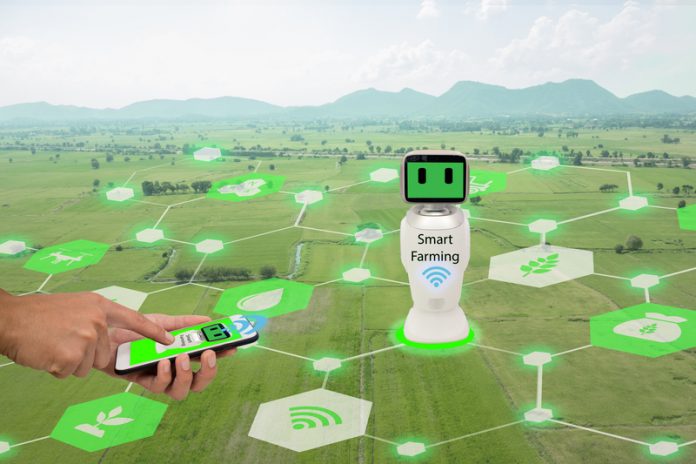New insight predicts precision farming, blockchain and sensor technology will revolutionise agriculture
The global agriculture industry is likely to be revolutionised over the next decade by digitisation, according to the latest insight from Informa’s Agribusiness Intelligence arm.
The rise of blockchain and big data, increased proliferation of precision farming and innovation in sensors and hardware will drive significant change. Informa’s Agribusiness Intelligence predicts that the precision farming market alone will reach $4 billion in 2018 while blockchain and sensor technologies will create new efficiencies in food production to increase opportunities for suppliers and technology innovators.
Precision farming
The precision farming market is set to reach $4 billion this year at an estimated compound annual growth rate (CAGR) of 13 percent. 80% of Australian farmers already use GPS on tractors, making Australia the leading pioneer in using the technology, as do 70% of US farmers.
Brazil and Argentina are also ahead of the curve. Precision agriculture is useful for crop nutrition, because it can map soil types, improve crop yield and enable variable rate fertiliser application. Farmers will increasingly make more use of real time information from GPS satellites to make informed decisions on when to fertilise, irrigate and what crops to plant at what time of the year.
The technology is also closely allied to the use of drones. In the US and Europe precision farming will primarily allow farmers to reduce over and under-spraying and reduce soil compaction by coordinating restricted passage of machinery.
Blockchain & Big Data
The agriculture industry has always been data rich but information poor, but this is changing through new data management software coming onto the market and the development of Blockchain technology.
The agriculture sector is complex with a wide variety of crops, geographic environments and climates. Informa’s Agribusiness Intelligence predicts that the key benefits of blockchain for agriculture companies will be introducing greater supply chain transparency, reducing the risk of food scares and facilitating more efficient transactions.
Companies are now working with farmers to use data relevant to their specific crops and climatic environments to inform the development of products but are facing some resistance. Data protection is likely to be one of the key issues facing the agriculture industry in the next few years, and the EU is likely to be at the forefront of this new field ahead of the US through already having the GDPR as a workable template.
Sensor technology
Remote monitoring is now driving change by allowing farmers to monitor their crops using sensors connected to the internet. Research has highlighted the importance of this technology – there are estimated to be over 40 key decisions that farmers need to make for any one individual crop, and so detailed information on soil acidity, water retention and nutrient levels are all important to the success of the farmer.
Industrial applications of M2M or IoT technology like this will be key over the next 10 years. The impact of consumer technology like smartphones and tablets and improved broadband in rural areas will also mean farmers will access more information and utilise decision aids in the field. In the next few years we will see increased use of sensor systems connected over the internet to increase the precision of seeding and fertiliser spreading and allow site-specific weed management in crop protection.
Jonathan Shoham, Consulting Analyst at Informa’s Agribusiness Intelligence commented: “The agriculture industry is undergoing significant change through revolutionary digital technologies and there has been a surge of M&A activity as large companies look to future proof themselves by aligning with technology pioneers. It is still in the early phases, but this innovation presents exciting new opportunities for food producers and associated industries. Digital agriculture is only just starting to demonstrate how it can improve efficiency in the agriculture industry and will also lead to exciting new applications for technology providers.”











